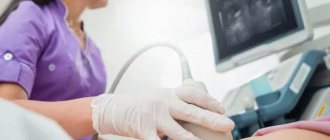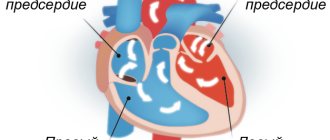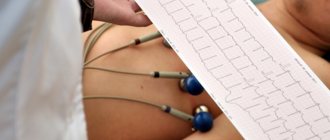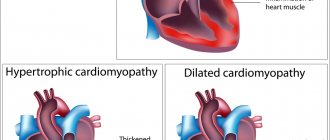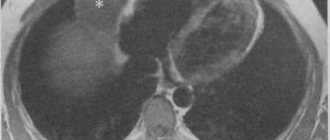Secondary retinopathy is a disease that affects the vessels of the retina and causes disruption of its blood supply. This pathology can develop against the background of various diseases - diabetes, hypertension, atherosclerosis, etc. Let's consider the main causes of this disease and methods of its treatment.
In this article
- Background retinopathy - what is it?
- Hypertensive retinopathy - what is it?
- Atherosclerotic retinopathy - what is it and how is it treated?
- Diabetic retinopathy
- Retinopathy in blood diseases
- Traumatic retinopathy
- Background retinopathy and retinal vascular changes in children
- Diagnostic features
- Prevention
Background retinopathy - what is it?
Retinopathy is a series of eye diseases that are characterized by damage to the vessels of the retina of the eye, as a result of which blood and oxygen do not flow to it. This is a rather dangerous disease that can lead to severe vision loss and complete blindness. Often retinopathy is a secondary pathology. It develops against the background of arterial hypertension, atherosclerosis, diabetes mellitus and other diseases. That's why it's called background. Let's look at the main types of retinopathy based on its causes.
Types of retinopathy
In ophthalmology, retinopathy is usually divided into primary and secondary. Both are caused by pathological changes in the retina of a non-inflammatory nature. Experts include primary retinopathy:
- Central serous retinopathy
- Acute posterior multifocal retinopathy
- External exudative retinopathy
Secondary retinopathy that occurs against the background of a disease or pathological condition of the body is divided into:
- Diabetic
- Hypertensive
- Traumatic
- Retinopathy blood diseases
In addition, there is a completely separate type of disease - retinopathy of prematurity.
Hypertensive retinopathy - what is it?
This form of retinopathy develops as a result of increased blood pressure, which leads to spasms of the arterioles of the fundus and damage to the walls of blood vessels. There are 4 stages of hypertensive retinopathy: Hypertensive angiopathy: dysfunction of the retina, arterioles and venules. They are reversible.
Hypertensive angiosclerosis, which is characterized by damage to the vascular walls with their compaction. The transparency of blood vessels is noticeably reduced.
Hypertensive retinopathy: the formation of pathological foci in the tissues of the inner membrane of the eye. Hemorrhages appear, protein fluid is released, and areas of oxygen deprivation are observed in the fundus. Hemophthalmos often develops, in which blood enters the vitreous body. All these processes are accompanied by a decrease in visual acuity and the appearance of dark spots before the eyes. Treatment of arterial hypertension at this stage leads to regression of retinopathy.
Hypertensive neuroretinopathy. At this stage, the optic disc becomes very swollen. Local retinal detachments with exudate are observed. In most cases, this form of retinopathy develops against the background of malignant types of hypertension, renal failure, etc. Emergency assistance is required, as the patient may go blind.
Treatment of hypertensive retinopathy is carried out during laser coagulation of the retina and oxygen barotherapy. But the main therapy is aimed at hypertension. It is necessary to stabilize blood pressure. Its constant increase will lead to the progression of retinopathy.
Prevention of retinopathy
The main principle, which in no case should be neglected by patients of endocrinologists, hematologists, neurologists, nephrologists, cardiologists (as well as parents of neonatological patients), is the mandatory consultation of an ophthalmologist. With any increased risk of developing retinopathy, the timeliness of diagnosis and intervention, coordination of the efforts of doctors of various fields, and the patient’s responsible attitude to his own vision and, accordingly, to the instructions of the treating ophthalmologist are crucial. Only in this case there are sufficiently high chances for longevity of the visual system, i.e. to prevent, slow down or stop the onset of the retinopathic process.
Atherosclerotic retinopathy - what is it and how is it treated?
Retinopathy is a vascular disease that can also occur against the background of atherosclerosis, a chronic pathology that affects the arteries and occurs due to lipid metabolism disorders. This disease may not appear on the visual organs for a long time. At the last stage of retinopathy, capillary hemorrhages form, which leads to the deposition of exudate crystals on the walls of blood vessels. Under an ophthalmoscope, the doctor may see severe pallor of the optic disc. There is a decrease in various visual functions.
Treatment of atherosclerotic retinopathy is based on treatment of the underlying pathology, which includes the use of angioprotectors, diuretics, vasodilators and antisclerotic agents. If left untreated, there is a risk of blockage of the artery of the inner lining of the eye and atrophy of the optic nerve, which can lead to significant loss of vision.
Our doctors who will solve your vision problems:
Fomenko Natalia Ivanovna Chief physician of the clinic, ophthalmologist of the highest category, ophthalmic surgeon.
Surgical treatment of cataracts, glaucoma and other eye diseases. Yakovleva Yulia Valerievna Refractive surgeon, specialist in laser vision correction (LASIK, Femto-LASIK) for myopia, farsightedness and astigmatism.
You can find out the cost of a particular procedure or make an appointment at the Moscow Eye Clinic by calling Moscow 8 (daily from 9:00 to 21:00) or using the ONLINE REGISTRATION FORM.
Diabetic retinopathy
Retinopathy as a complication of diabetes develops in almost all diabetics. In this case, vascular damage is observed in both types of this disease. The following factors increase your risk of developing diabetic retinopathy:
- long course of pathology;
- complete lack of treatment for diabetes;
- renal pathologies;
- hypertension;
- anemia.
Bad habits (smoking and alcohol abuse) are also factors that provoke retinopathy in diabetes. The disease progresses slowly. For a long time a person may not notice any ophthalmological symptoms. There are 3 clinical stages of diabetic retinopathy:
- diabetic angiopathy - primary and reversible vascular damage;
- diabetic retinopathy: corresponds to atherosclerotic and hypertensive forms of the disease at stages 2 and 3;
- proliferating diabetic retinopathy, which is characterized by the growth of new vessels in the retina.
Newly formed capillaries have fragile walls. Because of this, hemorrhages occur, including in the vitreous body. Hemorrhages subsequently cause scarring and retinal detachment, which is accompanied by severe vision loss. Diabetic retinopathy at different stages manifests itself in the following symptoms:
- persistent decline in visual acuity;
- formation of a veil before the eyes;
- the appearance of floating “flies”;
- deterioration of near vision.
At a later stage, the final loss of visual functions occurs, and the person becomes disabled. How to treat diabetic retinopathy? First of all, you need to monitor your blood sugar levels. You will have to be constantly monitored by an endocrinologist and visit an ophthalmologist twice a year. To improve the condition of the retina, angioprotectors, drugs to activate blood microcirculation and vitamins are prescribed. In case of detachment of the inner membrane of the eye, laser coagulation is performed.
Diabetic retinopathy is often complicated and leads to pathologies such as hemophthalmos, cataracts, and retinal detachment. When scars appear in the vitreous and extensive opacities, vitrectomy is performed - partial or complete removal. But the most serious consequence of diabetic retinopathy is irreversible blindness.
Retinopathy of prematurity
The pathology is observed in premature infants and is caused by underdevelopment of the retina. To complete the formation of the organ, newborns need visual rest and local tissue respiration without oxygen (glycolysis). However, in order to activate metabolism and complete the development of other organs, such children need additional oxygenation, which inhibits the processes of glycolysis in the retina.
As a rule, retinopathy of prematurity is detected in children whose birth occurs before the 31st week of pregnancy and whose weight does not reach 1.5 kg. However, in some cases, the pathology can also occur in infants who have undergone blood transfusions or oxygen therapy due to premature birth.
In this regard, all children at risk are checked by an ophthalmologist one month after birth. His consultation is required every 2 weeks thereafter, until the eye structures are fully formed. These measures are necessary to prevent the occurrence of late complications of this type of background retinopathy - amblyopia, strabismus, retinal detachment, primary glaucoma, etc.
In most cases, retinopathy of prematurity disappears spontaneously without drug treatment, so often the specialist simply chooses a wait-and-see approach. In rare cases, the doctor may prescribe a laser coagulation or cryoretinopexy procedure, and extremely rarely, an operation to remove the vitreous body or scleroplasty.
Retinopathy in blood diseases
Blood diseases, including anemia, polycythemia, leukemia, etc., can lead to the development of retinopathy. At the same time, the clinical picture of the disease differs markedly from the course of other forms of this disease. This depends on the background of what kind of blood pathology changes in the retinal vessels began to be observed. Thus, with polycythemia (a benign tumor process), the fundus of the eye becomes bright red, the veins of the retina become especially red. There are signs of vascular thrombosis and papilledema.
With anemia (low content of red blood cells in the blood), the fundus of the eye under an ophthalmoscope is pale, and the vessels are pathologically dilated. Frequent hemorrhages occur under the retina or into the vitreous body, which leads to its/his detachment.
Retinopathy, which occurs against the background of leukemia (blood cancer), is accompanied by the proliferation of blood vessels. They are crimped and fragile, and therefore often burst, causing hemorrhages. The inner lining and optic disc swell.
Treatment of background retinopathy in blood pathologies is based on treatment of the underlying disease and timely laser coagulation. But often the prognosis for the outcome of the disease is unfavorable.
Treatment of retinopathy
The main thing in the treatment of secondary retinopathy is compensation for the disease that caused it. In parallel, direct treatment of retinal vascular changes is carried out using conservative and surgical methods. Their choice remains at the discretion of the doctor after diagnostic studies, in accordance with the type and stage of the identified disease.
In conservative treatment of retinopathy, treatment consists of instilling certain eye drops. These are, as a rule, solutions of vitamin complexes and hormonal preparations.
Widely used surgical treatment methods are laser and cryosurgical coagulation of the retina. If necessary, vitrectomy surgery may be prescribed.
In the case of retinopathy of prematurity, spontaneous recovery is possible in the early stages of the disease, which does not negate the mandatory observation of an ophthalmologist and pediatrician. In the absence of a spontaneous positive outcome of the disease, young patients may undergo laser photocoagulation of the retina, cryoretinopexy, scleroplasty or vitrectomy.
Of the physiotherapeutic methods of influence, the greatest effect in the treatment of certain types of retinopathy (diabetic, including) is shown by hyperbaric oxygenation - the effect of oxygen under high pressure on retinal tissue.
Traumatic retinopathy
Background retinopathy may result from eye trauma. Signs of hemorrhages are observed immediately. The pathological process develops extremely quickly. If no measures are taken, the risk of optic nerve atrophy increases. Such changes are irreversible. A person loses visual functions. The consequences of such injuries are treated by eliminating hypoxia. It is necessary to restore blood and oxygen supply to the retina. Vitamins and medications are prescribed. The patient is under constant medical supervision.
Complications of retinopathy
Complications of diabetic retinopathy, as a rule, include vascular proliferation, leading to frequent hemorrhages into the vitreous body, the occurrence of secondary glaucoma, retinal detachment, opacification and scarring of the vitreous body, and, finally, blindness.
Hypertensive retinopathy can be complicated by recurrent hemophthalmos and retinal vein thrombosis, which significantly reduces the quality of vision and can threaten complete loss of vision.
Retinopathy is a threat to pregnancy and sometimes causes abortion.
With atherosclerotic retinopathy, retinal vein occlusions, which can lead to optic nerve atrophy, become frequent complications.
Among the late complications of retinopathy of prematurity, experts name myopia, amblyopia, strabismus, low vision, glaucoma, and retinal detachment.
Background retinopathy and retinal vascular changes in children
Retinopathy occurs quite often in children. The reasons for the development of pathology are exactly the same as in adults: diabetes, injuries, blood diseases, and, less commonly, atherosclerosis and hypertension. There is also a separate type of this disease - retinopathy of prematurity. It is observed in newborns in the following cases:
- born before 31 weeks;
- body weight up to 1.5 kg;
- after a blood transfusion;
- after saturating the body with oxygen.
Pregnant women who suffer from blood diseases, diabetes, and hypertension should be constantly examined, including by an ophthalmologist. The risk of having a child with retinopathy or developing it later is quite high. If the pregnant woman herself shows signs of this disease, the question of artificial termination of pregnancy arises.
Retinopathy in children often causes other ophthalmopathologies:
- myopia;
- strabismus;
- glaucoma;
- amblyopia.
The retina can also detach, causing severe vision loss. Vascular changes can be detected within 3-4 weeks after the baby is born. The baby is under close supervision of specialists. He is examined by an ophthalmologist every two weeks. Doctors monitor the process of retinal formation. Very often, retinopathy disappears on its own, that is, it regresses. Sometimes the pathology progresses quickly. In such cases, laser coagulation is performed.
Causes of retinopathy
The etiology of primary retinopathy is unknown, so they are called idiopathic. The appearance of secondary retinopathy can be caused by a systemic disease of the body, intoxication, or serious injuries.
Secondary retinopathy is often a complication of hypertension, diabetes mellitus, renal failure, systemic atherosclerosis, diseases of the blood system, toxicosis during pregnancy, injuries to the chest, head, face, and eyeball.
Retinopathy of prematurity is a special form of the disease that is associated with intrauterine underdevelopment of the retina. It is detected only in newborns born prematurely, with a low body weight (up to 1500 g) and the need for subsequent nursing in oxygen incubators.
Diagnostic features
Diagnosis is carried out by various specialists, depending on what caused the development of background retinopathy. Of course, ophthalmological examination methods are also prescribed. Among them:
- tonometry: measurement of intraocular pressure;
- angiography: examination of blood vessels;
- laser scanning;
- Ultrasound;
- perimetry - assessment of visual fields;
- ophthalmoscopy - examination of the fundus of the eye.
These are the basic procedures. As an additional method, electroretinography can be prescribed to measure the electrical potential of the retina.
Prevention
To reduce the risk of complications, you must adhere to the following rules:
- monitor your blood sugar levels;
- measure your blood pressure daily;
- do not self-medicate;
- visit the clinic regularly;
- try to eat right;
- spend more time in the fresh air;
- take vitamins;
- do physical exercise.
The diseases listed earlier (atherosclerosis, hypertension, diabetes, etc.) force a person to carefully monitor their health and constantly undergo examinations. If you do not do this, complications may arise, and not only in the eyes.
In order to prevent retinopathy of prematurity, women at risk of premature birth should be hospitalized. If the baby is born prematurely, he will receive prompt medical attention. If retinopathy is detected in a newborn, the child will have to visit an ophthalmologist twice a year until the age of 18, even if the disease has subsided without treatment.
Prevention of background retinopathy
To prevent the development of background retinopathy in adults, dynamic monitoring and regular examination of patients at risk (patients with hypertension, diabetes, atherosclerosis, etc.) are required.
In order to prevent retinopathy of prematurity, pregnant women with the threat of premature birth are advised to stay in a hospital, which will make it possible to provide early care to the newborn. Children with neonatal retinopathy should be observed by an ophthalmologist until the age of eighteen, even if it resolves favorably in infancy.
By contacting the Moscow Eye Clinic, each patient can be sure that some of the best Russian specialists will be responsible for the results of treatment. The high reputation of the clinic and thousands of grateful patients will certainly add to your confidence in the right choice. The most modern equipment for the diagnosis and treatment of eye diseases and an individual approach to the problems of each patient are a guarantee of high treatment results at the Moscow Eye Clinic. We provide diagnostics and treatment for children over 4 years of age and adults.


